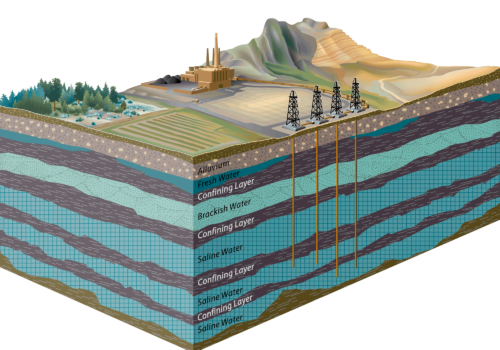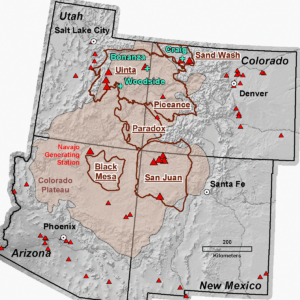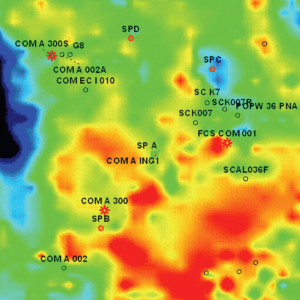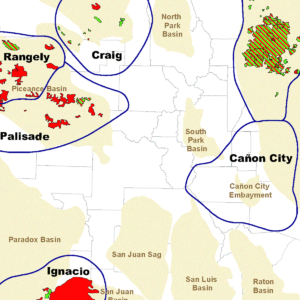In 2009, the University of Utah and the CGS were recipients of a U.S. Department of Energy (DOE) grant of $3.8 million to study the potential for sequestering CO2 in three strata in the Colorado Plateau. Co-Principal Investigators for the project were Dr. Vince Matthews of the CGS and Dr. Brian McPherson of the University of Utah. Other partners in the project are Tri-State Transmission and Generation, Shell Exploration and Production Company, Schlumberger Carbon Services, Utah Geological Survey, Arizona Geological Survey, and New Mexico Bureau of Minerals and Geology. In 2010, another $6.2 million was added to the project making the total project amount $11 million.
The CGS participated in the Southwest Partnership for Carbon Sequestration (SWP) between 2003 and 2014. In its regional capacity analyses for the Carbon Sequestration Atlas of the United States and Canada, the SWP identified the Cretaceous Dakota Sandstone, the Jurassic Entrada Sandstone, and the Pennsylvanian Weber Sandstone as three of the most promising geologic sequestration formations for the southwestern U.S. The primary goal of this project was to characterize these three promising carbon sequestration formations. The Dakota and Entrada formations are ubiquitous throughout the Colorado Plateau and Rocky Mountain region, and thus represent common sequestration candidates for most point sources in the region.
We focused on rock core and geophysical data of these formations from all areas of the region. However, we also focused on the acquisition of new data and the analysis of model simulations on a representative case-study area in northwest Colorado where we drilled and cored an 9,600-foot-deep well. Specifically, our analysis focused on the sequestration potential of these three, deep-saline formations within a large, Laramide-age structure south of the town of Craig. The study included detailed structural analysis of the large forced fold, as well as the characterization within the structure of the Dakota, Entrada, and Weber saline aquifers and their overlying seals.
The characterization project not only was important locally, but also had regional implications because the formations are widespread and because the structure is only 50 miles northeast of the heart of the Piceance Basin. Given the size of the structure, it conceivably could serve as a regional sequestration sink for future power plants, natural gas processing plants, cement plants, and oil shale development.
The state geological surveys in the other three Colorado Plateau states (AZ, UT, NM) extended the information gleaned at the Craig site to their parts of the Plateau. The four-state region had, as of 2004, emissions of more than 170 million tons of CO2 per year from power plants and contains an estimated 89 billion to 320 billion tons of storage capacity.





